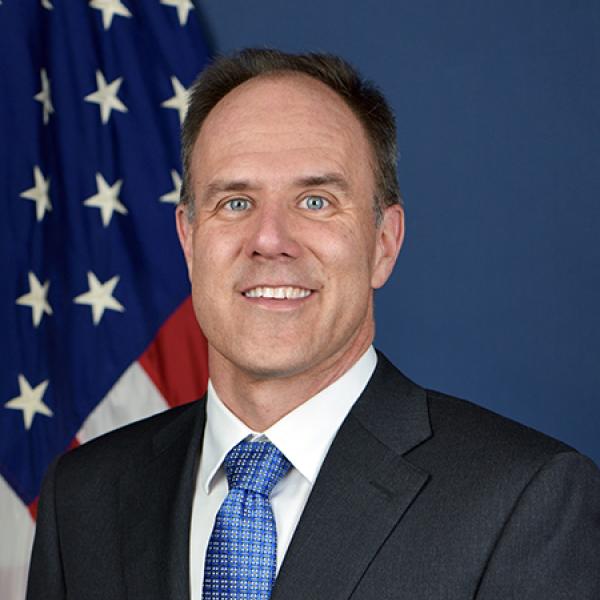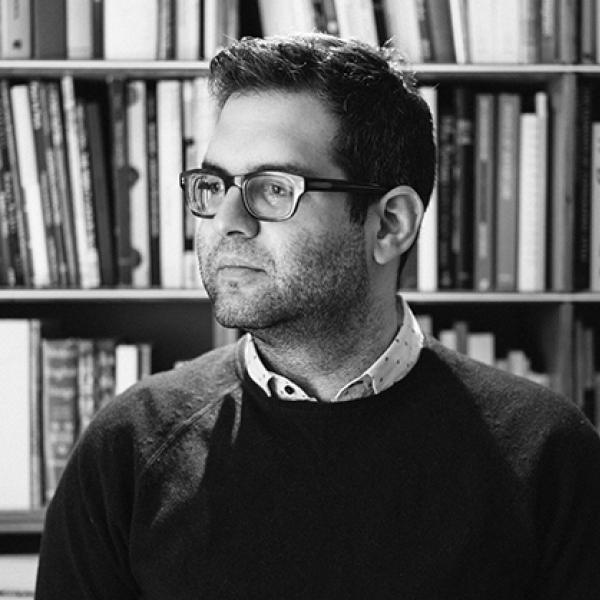Connecting People to Place

While most people think of vast swathes of wilderness when they think of the National Park Service (NPS), the agency’s mandate also covers cultural resources, including historic landmarks, such as the Harriet Tubman Home in Auburn, New York. The agency additionally acts in an advisory capacity regarding the stewardship of designated cultural heritage areas across the country, such as Shenandoah Valley Battlefields National Historic District. Shaun Eyring—who prior to joining the Park Service trained and worked as a landscape architect—is one of several regional cultural resource chiefs for the NPS.
Based in the Northeast region, Eyring’s purview is to assist national parks with everything from helping them understand the historic sites that are part of their cultural landscape to helping them document, evaluate, and conserve their collections to helping them manage archaeological efforts. While Eyring readily acknowledges that she works in a realm rife with rules and regulations, she also insists that there’s plenty of room for creativity, whether it’s in daily problem-solving or learning to tell a better story about the national parks. In our conversation with her, Eyring explains why she considers creativity a job requirement.
DEFINING CREATIVITY AS IT APPLIES TO THE WORK OF NPS
The kind of work that we do is directed in a very basic way by our mission. Beyond that, we have a number of policies and guidelines that direct our work, and it can become very formulaic, very procedural. Over time, especially if you’ve worked with it for a long time, you can get a little bit stifled and think of things in a very narrow way. Creativity is about pushing those boundaries and really thinking of different ways of telling stories and different ways of reaching new audiences and connecting to our evolving society.
Often we’ll reach outside to get assistance because sometimes it’s really hard when you’re inside the National Park Service as an employee to push that model without the input from other new voices. Last year we were really struggling with four historical parks and asking the question: “How do these parks continue to provide a really engaging, high-quality visitor experience when we’re faced with declining budgets and fewer staff?”
The traditional model is based on visitor services and one-on-one ranger-led tours. That was all becoming not only functionally obsolete compared to what current audiences are asking for, but also operationally it just wasn’t working for us anymore. We worked with the Van Alen Institute, and they helped us pull together a team of talented young professionals from all different disciplines that included landscape architects, architects, graphic artists, filmmakers, ecologists, and historians.
They worked very closely with these four parks, brainstorming fresh ideas about what the history of any one of these places was and how you might be able to frame it and package it and get it out there in a really different but quick, manageable way. One of the things that made it successful was that in addition to this whole suite of ideas that we came up with, the teams were also asked to create one pilot that could be implemented at a very low cost over the course of one summer. It provided the parks with a real example of how they could take these ideas and they could take their place that they see every single day, think about it in a new way, and then share that with their visitors.
|
A cutaway locomotive at the Steamtown National Historic Site in Scranton, Pennsylvania, one of the sites where the National Park Service worked with the Van Alen Institute to find new and exciting ways to tell the stories of these historic locations. Photo courtesy of National Park Service and Van Alen Institute |
HOW INTERCONNECTION LEADS TO MORE CREATIVE PROBLEM-SOLVING
I use my skills as a trained landscape architect every single day in the National Park Service. One of the things that you’re trained to do as a landscape architect is think big picture to see how many things are connected to one another—seemingly things that aren’t related—and to reach out in a very connected way to others and to place. [I learned] to not just approach things on my own but to really think about how all of these things fit together and then work with a range of different voices to act on whatever needs to happen to solve a problem.
The government is naturally what they like to call “stove-piped,” where all of these different disciplines are in their own little world pursuing their own mission and vision. I came into the National Park Service with this very connected view of things, and I think that really helped me see the overlaps between all of these disciplines and begin to think about ways that you could pull people together in teams [instead of] having individuals work solo on their ideas, or think about ways that we could reach out to partners and bring them in, making a much bigger team that wasn’t only just about the Park Service.
ON THE IMPORTANCE OF STORYTELLING
All of the cultural resource disciplines are filled with highly skilled, qualified staff and brilliant practitioners and researchers. For us, part of storytelling is about taking this really challenging, dense information [that they’ve developed] and making it accessible to others. The other part of storytelling is about a connection to a place—understanding its history and understanding the stories that connect different people to that place.
We’ve been working with different groups on different ways of getting those stories out. Our history and archeology programs have been partnering with Groundwork USA on the Urban Archeology Youth Corps, and recently I visited their lab. They had one group in Lawrence, Massachusetts, this summer. They hired a group of eight young adults ages 16 to 18, and they talked about archeology in the city and what you can learn from it. The question that they posed to these young people was: “How has urban redevelopment in Lawrence affected the history of the city?” They didn’t do any digging, but they went around to their industrial sites and other places that have been destroyed over time to learn more about the very place where they had grown up.
They held a community day, and they [shared their findings] in a couple of different ways. Two of the young women put on an interpretive dance. They wrote slam poetry about Lawrence. The young woman who wrote a history of Lawrence created a creative trifold poster. They did a timeline and they did a video. It wasn’t just your standard, “Here’s the history; here’s our narrative” presentation. It was much more engaging. I realized how important that was, especially for reaching out to younger people, and I think that at least that group of youth left that program feeling very differently about the place where they had grown up.
HOW TO ENCOURAGE CREATIVITY AS A LEADER
Sometimes it’s scary to go outside your box. So if you can show that you can do it and it’s not so hard and you can reap a lot of rewards, I think that goes a long way. I’m also in a position as a manager to say it’s okay if you don’t succeed when you try something. We have to be responsible, but if somebody tries something and it doesn’t work, I’m okay with that. We will pull back and say, “Okay, what didn’t work? What can we do differently next time? This isn’t the end of this.” I won’t let anybody off the hook just because something failed or seemingly failed, because I feel like every time you try something like this you learn something valuable that can inform the next time you try something new.







